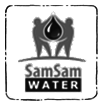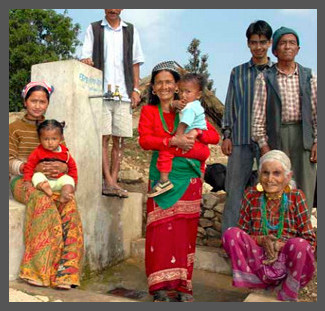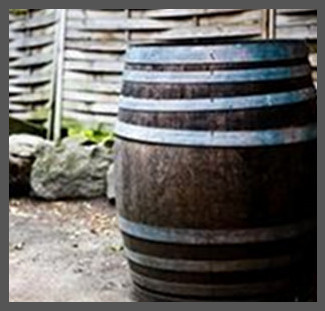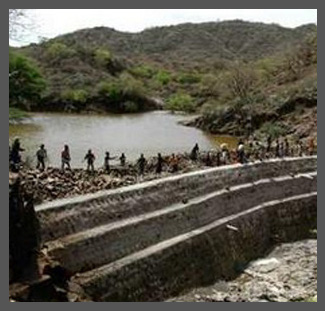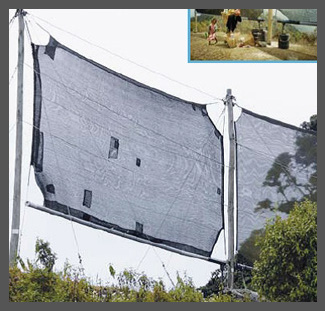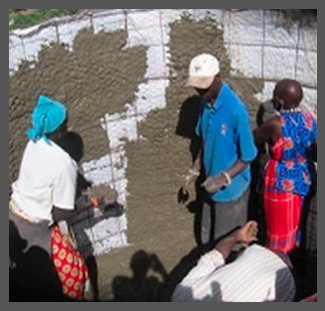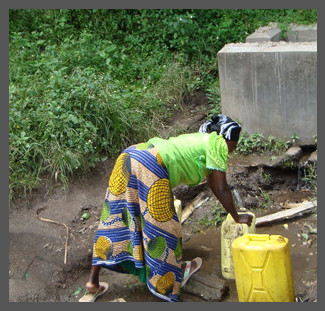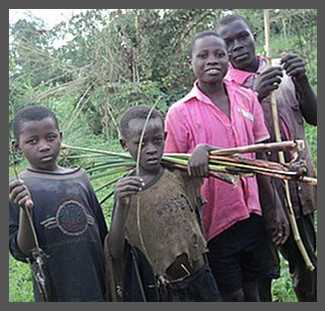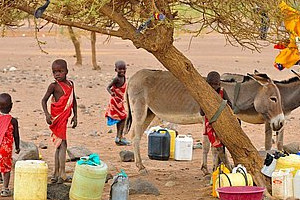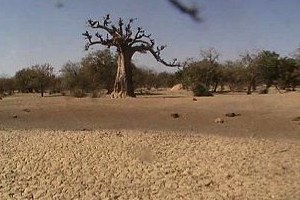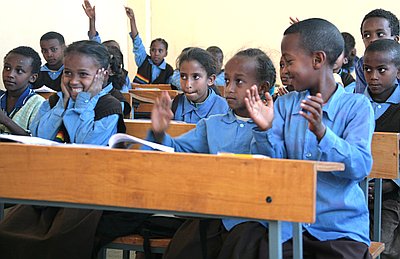Water Portal / Rainwater Harvesting
Rainwater harvesting is a technique of collection and storage of rainwater into natural reservoirs or tanks, or the infiltration of surface water into subsurface aquifers (before it is lost as surface runoff). One method of rainwater harvesting is rooftop harvesting. With rooftop harvesting, most any surface — tiles, metal sheets, plastics, but not grass or palm leaf — can be used to intercept the flow of rainwater and provide a household with high-quality drinking water and year-round storage. Other uses include water for gardens, livestock, and irrigation, etc.
The reasons for using rainwater harvesting systems answer three questions:
What: Rainwater harvesting will improve water supply, food production, and ultimately food security.
Who: Water insecure households or individuals in rural areas will benefit the most from rainwater harvesting systems.
How: Since rainwater harvesting leads to water supply which leads to food security, this will greatly contribute to income generation.
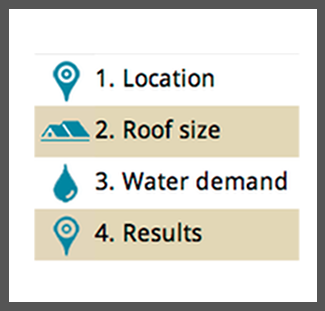
| ||||
Retention & Reuse) |
Micro-financing |
|||
3R and MUS |
Clearwater Revival |
||||
Field experiences
These projects are utilizing rainwater harvesting techniques and are part of the project listing in Really Simple Reporting (RSR) on Akvo.org.
| Akvo RSR Project: WaSH program in Rural Bangladesh
Considering the unhealthy and unhygenic environment in rural school and community in southern part of Bangladesh, PSTC will initiate WaSH for schools and communities. lt ensures drinking water and sanitation both in school and community by installing hardware in selected school and areas. In addition, hygiene promotion is done through group meeting/courtyard meeting in school and community. |
| Akvo RSR Project: Scale up of Sustainable Water Access
This project targets to scale up water access in Namanga, Central and Mashuru which together form Kajiado Central and Mashuru Districts. It is envisaged to use the momentum of the foregoing projects and of new multi-stakeholder initiatives in the area for achieving sustainable water access in the proposed collaboration between WML, Aqua for All and AMREF. |
| Akvo RSR Project: Etude technique d’avant-projet
The overall objective of the study is to promote the optimal use of rainwater as a tool in integrated management of water resources for more equitable access to water and improved living conditions. Specifically, the study aims to select the most suitable sites for the facilities of rainwater catchments, with a view to contributing to improving the food security of women and children through improved access to water and the development of agricultural and pastoral sectors conducive to women. |
| Akvo RSR Project: Rainwater harvesting for Nicolas School
The project takes place in a very dry part of Ethiopia. The rainy season is short and the aim is to harvest rainwater for the children at the school to use. 80% of children at the school have parents with disabilities such as loss of arms, legs or eyesight. Water collected will be used to provide water for drinking, washing hands & sanitation. The local water supply is unreliable, and exists in unsanitary conditions. The project will copy an existing successful project at the nearby Kindergarten. |
| Akvo RSR Project: Safe water supply for Fayaco, Senegal
This project proposal involves the construction of 21 rainwater harvesting (RWH) systems for the village of Fayaco. Fayaco is located on the Saloum isles, which only has water with high fluor and chlorine content, which leads to various health problems. The beneficiaries will be organised in a water management committee, who are responsible for the management, O&M of the project. This RWH project is included in the hydraulic programme of CARITAS KAOLACK as part of a monitoring programme. |
| Akvo RSR Project: Rainwater harvesting in Guinee Bissau
The project will take place in Tombali in southern Guinee-Bissau. The aim is to build 50 domestic rainwater harvesting tanks of 5000 l each and to train 10 masons. This is a part of our overall program in 2009 making 170 tanks and training 35 masons in constructing and maintaining watertanks and latrines. 50 tanks will serve 50 households of 16 members each during the dry season March, April, May and June. The result will reduce the burden of women, carry water over a distance of 2 - 4 km daily. |
Acknowledgements
Many of the tools, technologies, and projects on this page are courtesy of the Rainwater Harvesting Implementation Network.
RAIN is an international network with the aim to increase access to water for vulnerable sections of society in developing countries - women and children in particular - by collecting and storing rainwater.
Started in December 2003, RAIN focuses on field implementation of small-scale rainwater harvesting projects, capacity building of local organisations and knowledge exchange on rainwater harvesting on a global scale.

